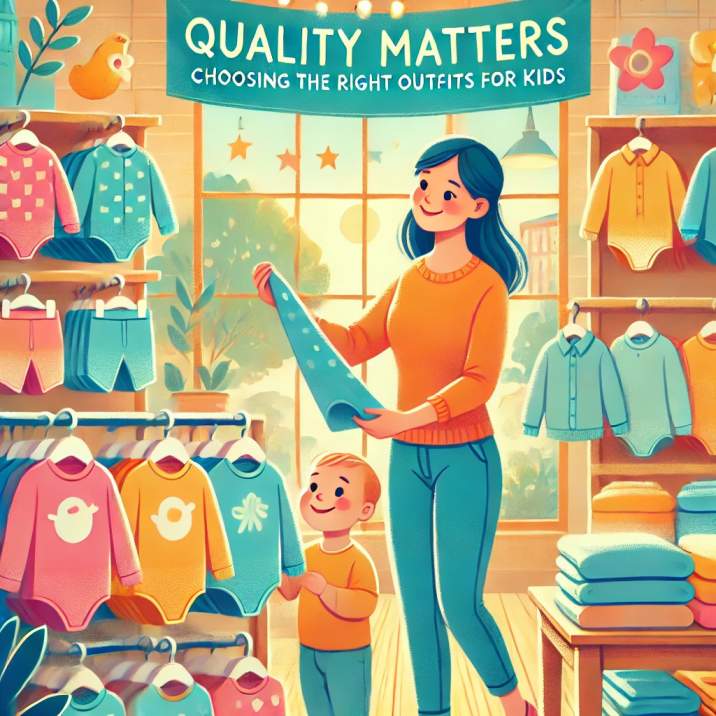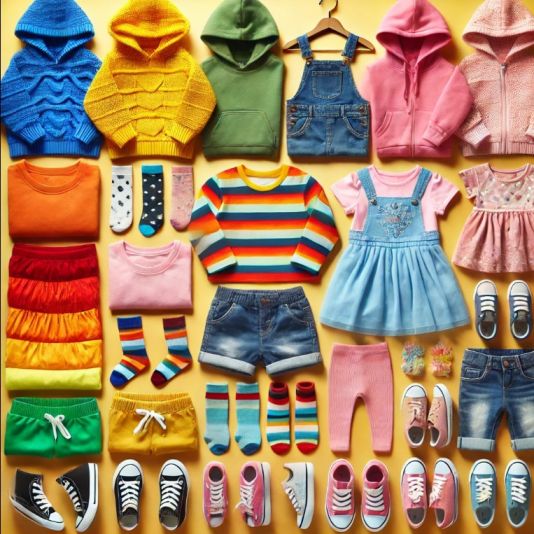Defining Quality: What Sets the Standard?
Choosing the right outfits for kids is crucial for their comfort, safety, and confidence. Quality clothing not only withstands the wear and tear of active play but also ensures that children feel good in what they wear. With many options available, parents face the challenge of selecting outfits that balance style, durability, and value. Investing in high-quality fabrics and construction can lead to long-term savings and greater satisfaction. This article explores the importance of premium children’s clothing and offers practical advice for making informed choices that benefit both kids and parents.
Why Quality Clothing is Important for Kids
- Durability: High-quality clothing is designed to withstand the rigors of daily wear, ensuring it lasts longer and saves money in the long run.
- Comfort: Soft, breathable fabrics enhance comfort, allowing kids to play and move freely without irritation.
- Safety: Quality garments often adhere to safety standards, reducing the risk of hazards like choking hazards from small parts or skin irritations from synthetic materials.
- Fit and Mobility: Well-constructed clothing provides a better fit, allowing for greater mobility, which is essential for active children.
- Confidence: Wearing stylish, comfortable outfits boosts children’s self-esteem, helping them express their individuality.
Key Factors to Consider When Choosing Kids’ Outfits
- Fabric and Material: Opt for breathable, hypoallergenic fabrics like cotton and bamboo that are gentle on a child’s sensitive skin. Look for materials that are easy to wash and maintain.
- Durability: Choose outfits made from robust materials that can withstand the rough and tumble of everyday activities. Reinforced seams and high-quality stitching enhance the lifespan of the clothing.
- Comfort and Fit: Ensure the clothing allows for freedom of movement and is appropriately sized. Avoid tight or restrictive garments, and consider adjustable features to accommodate growth.
- Safety Feature: Check for potential hazards such as small buttons, drawstrings, or loose threads that could pose choking risks. Opt for clothing that meets safety regulations for children’s apparel.
- Style and Versatility: Seek out adaptable items that can be combined and paired for different events. This will ensure that children have stylish options for playdates, school, and special events.
- Ease of Care: Select machine-washable outfits resistant to stains. This helps make laundry easier for busy parents while maintaining the clothing’s quality.
- Weather Appropriateness: Consider the climate and choose clothing that provides adequate warmth in winter or breathability in summer. Layering options are beneficial for changing weather conditions.
Choosing the Right Outfits for Different Occasions
Everyday Wear
- Casual Comfort: For daily activities, prioritize comfortable and practical outfits. Choose soft t-shirts, elastic-waist pants, and breathable fabrics that allow for movement during play.
- Layering Options: Consider layering pieces like lightweight jackets or cardigans for changing temperatures, ensuring kids stay comfortable throughout the day.
Special Occasions
- Dressy but Comfortable: For events like birthdays, family gatherings, or school functions, select outfits that are stylish yet comfortable. Look for soft dresses or tailored shirts that allow for easy movement.
- Appropriate Footwear: Ensure that shoes are both stylish and practical. Avoid overly formal options that may hinder mobility; instead, opt for dress shoes that provide comfort.
Active Playdates
- Functional Attire: For playdates or sports activities, choose durable and flexible outfits like shorts, leggings, and breathable tees. Ensure that clothing allows for a range of motion.
- Weather Considerations: Make sure to review the weather forecast and dress appropriately. Wear sun hats and UV-protective clothing for sunny days, and consider layering for cooler temperatures.
School Attire
- School Uniforms or Smart Casual: Adhere to school dress codes by selecting appropriate uniforms or smart casual options like polo shirts and khakis. Focus on easy-to-wear pieces that promote independence.
- Comfortable Footwear: Shoes should be practical for school activities, offering support for long hours of wear while being easy to put on and take off.
Seasonal Events
- Winter Wear: When engaging in winter activities, it’s important to select cozy and water-resistant outer clothing such as insulated coats, thermal layers, and snow boots to ensure children stay warm and dry.
- Summer Outfits: Lightweight, loose-fitting clothes are ideal for summer events. Consider sun hats and UV-protective swimwear for beach outings.
Family Vacations
- Versatile Packing: When planning family trips, pack versatile, layered, and mixed outfits. Consider comfortable travel attire that transitions well from day to evening.
- Activity-Specific Gear: Depending on planned activities, include specialized clothing such as swimwear, hiking gear, or formal outfits for special dinners.
Budgeting for Quality Outfits
- Set a Budget: Establish a practical budget that emphasizes quality over quantity, making room for a few high-quality items instead of filling your closet with cheaper options.
- Research Brands: Look for brands known for quality clothing at reasonable prices. Make sure to look at reviews and suggestions from other parents to find the best value.
- Shop Sales and Clearance: Take advantage of seasonal sales, clearance events, and promotional discounts to purchase high-quality items at lower prices.
- Consider Second-Hand Options: Explore thrift stores, consignment shops, and online marketplaces for gently used clothing from reputable brands.
- Invest in Basics: Keep in mind to buy fundamental items that can be combined and coordinated, maximizing the flexibility of each piece while also guaranteeing durability.
- Plan for Growth: Buy slightly larger sizes that allow for growth, ensuring the outfits last longer and remain wearable as children grow.
Conclusion
Choosing the right outfits for kids involves prioritizing quality, comfort, and safety while considering the specific needs for various occasions. Investing in durable, well-fitting clothing not only enhances children’s confidence and mobility but also ensures they are well-prepared for play and exploration. By being mindful of factors like fabric, versatility, and budget, parents can make informed decisions that lead to a functional and stylish wardrobe. Ultimately, quality clothing pays off in the long run, fostering a positive experience for both kids and parents as they navigate the ever-changing world of children’s fashion.



